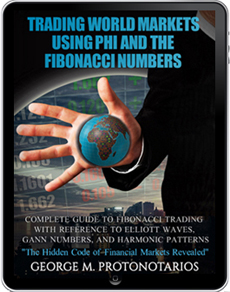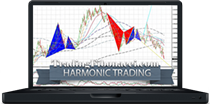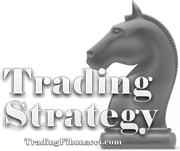Forex Trading Tips
Here are seven essential tips to trade the Foreign Exchange market effectively.
TIP (1): Understand What You Are Trading
First and foremost, you must understand what you are trading. Many investors mistakenly assume that trading Forex currencies is similar to trading stocks or indices. This is completely incorrect. Trading Forex is fundamentally different from trading in any other financial market. The Forex market operates 24 hours a day, five days a week, with immense liquidity, ultra-tight spreads, and near-perfect information. This unique combination creates an optimal environment for competitive trading.
Forex is the Most Competitive Market Worldwide
The Forex market is the most competitive financial market globally, and for good reason:
-
Millions of real currency buyers and sellers participate daily (including banks, importers/exporters, and tourists).
-
Millions of active Forex traders, many of whom trade full-time, contribute approximately 95% of total market volume.
-
Thousands of arbitrageurs operate daily, further enhancing market liquidity.
-
Hundreds of retail and institutional Forex brokers exist, including NDD (Non-Dealing Desk) and DD (Dealing Desk) models.
-
The total daily market volume exceeds 4 trillion US dollars.
-
The market benefits from near-perfect, real-time information availability.
-
Major currency pairs (EURUSD, USDJPY, GBPUSD, USDCHF) offer extremely tight spreads, making them cheaper to trade than any other financial instruments.
Read More: » The Foreign Exchange Market and History
TIP (2): Best Time to Trade the 24/5 Forex Market
Timing is crucial when trading currencies or any other financial instruments. Market spreads and liquidity can vary significantly throughout the day. Generally, the optimal time to trade Forex is:
■ 10:00 – 17:00 PM (GMT)
During this 7-hour window, market liquidity reaches its highest levels, resulting in tighter spreads and more efficient price movements.
In terms of both liquidity and price volatility, the best days to trade Forex are:
■ Tuesday, Wednesday, and Thursday
These midweek sessions typically offer the most consistent trading opportunities.
The Forex Market Sessions
The Foreign Exchange Market operates 24 hours a day, five days a week, as an over-the-counter (OTC) market.
Each trading day is divided into four main sessions:
-
Sydney Session
-
Tokyo Session
-
London Session
-
New York Session
Each session overlaps with others at certain times, increasing liquidity and trading volume during those periods.
■ Summer Time zones (April–October)
|
Time Zone |
EDT |
GMT |
|---|---|---|
|
London Open / London Close |
3:00 AM to 12:00 PM |
7:00 AM to 16:00 |
|
New York Open New York Close |
8:00 AM to 17:00 |
12:00 PM to 21:00 |
|
Sydney Open / Close |
18:00 to 3:00 AM |
22:00 to 7:00 AM |
|
Tokyo Open / Close |
19:00 to 4:00 AM |
23:00 to 8:00 AM |
During Winter, there are some changes in the Forex Market hours, as follows:
■ Winter Time zones (October-April)
|
Time Zone |
EDT |
GMT |
|---|---|---|
|
London Open / Close |
3:00 AM to 12:00 PM |
8:00 AM to 17:00 |
|
New York Open / Close |
8:00 AM to 17:00 |
13.00 to 22.00 |
|
Sydney Open / Close |
16:00 to 1:00 AM |
21:00 to 6:00 AM |
|
Tokyo Open / Close |
18:00 PM to 3:00 AM |
23:00 to 8:00 AM |
The Forex Market Overlaps
Session overlaps occur when two major Forex trading sessions are open at the same time. These overlaps create spikes in trading activity, increased liquidity, and tighter spreads. In the summer timezone, the three key overlaps are:
(i) London and New York Overlap: 12:00 PM to 16:00 GMT
(ii) Sydney and Tokyo Overlap: 23:00 to 07:00 AM GMT
(iii) London and Tokyo Overlap: 07:00 AM to 08:00 AM GMT
Among these, the London and New York overlap typically offers the highest trading volume and the most significant price movements. For broader trading opportunities, this window can be extended to include one hour before the New York session opens and two hours after the London session closes. That gives:
■ 10:00 – 17:00 PM (GMT) or 6:00 AM – 1:00 PM (EST)
Read More: » Forex Time Frames and Trading Styles
TIP (3): The Importance of the US Dollar
The Forex market is driven by macroeconomic trends and intermarket relationships.
Why It Matters
The U.S. dollar (USD) serves as the world’s primary reserve currency and is either the base or quote currency in most major forex pairs (e.g., EUR/USD, USD/JPY, GBP/USD).
Because global trade, commodities (like oil and gold), and international debt markets are predominantly priced in USD, any significant shift in the dollar’s strength creates ripple effects across all asset classes—impacting currencies, equities, bonds, and commodities alike.
Mechanisms
Here are five key mechanisms that often influence currency movements:
1. The US Dollar is Going Up, Everything Else is Going Down
-
This usually happens in risk-off environments where investors flee to the safety of the US Dollar.
-
Impact: USD strength across the board (EURUSD ↓, GBPUSD ↓, AUDUSD ↓, etc.)
-
Focus on this mechanism because the USD is a benchmark currency, involved in ~85% of all Forex trades.
2. The US Dollar is Going Down, Everything Else is Going Up
-
Occurs in risk-on environments or during USD weakness due to poor economic data, dovish Fed policy, etc.
-
Impact: Broad-based USD weakness, other currencies rise in relative value.
-
Also critical to monitor, especially when analyzing dollar-index-linked reactions.
3. Gold Price is Going Up → Australian Dollar is Going Up
-
Australia is a major gold exporter.
-
AUD tends to correlate positively with gold prices.
-
Tip: Watch XAUUSD for insights into AUDUSD direction.
4. Crude Oil Price is Going Up → Canadian Dollar is Going Up
-
Canada is a leading oil exporter.
-
CAD tends to strengthen with rising oil prices.
-
Tip: Crude oil (WTI) movements often precede or mirror USDCAD reversals.
5. Dow Jones is Going Up → USDJPY is Going Up
-
As equities rise, risk appetite increases, and traders shift from safe-haven JPY to higher-yielding USD.
-
USDJPY often rises in tandem with U.S. stock indices during bullish risk sentiment.
Why You Should Focus Most on Mechanisms (1) and (2):
-
The US Dollar Index (DXY) is a macro barometer of USD strength/weakness.
-
Given the USD’s dominant role in 85% of global Forex trades, its movements set the tone for most currency pairs.
Track the DXY (US Dollar Index): ► https://www.bloomberg.com/quote/DXY:CUR
TIP (4): Selective Trading (Essential Steps)
10 Essential Steps to Identify & Execute Profitable Forex Trades
-
Find Trending Forex Pairs on the Daily (D1) Chart
Look for clear upward or downward trends to focus on.
-
Confirm Trend Direction on the 1-Hour (H1) Chart
Verify that the shorter timeframe supports the daily trend direction.
-
Draw Key Trendlines & Major Support/Resistance Levels
Mark these levels for future reference in trade planning.
-
Check Daily MACD for Divergences
Avoid trading against divergences between MACD histogram slope and price slope to reduce risk.
-
Check Daily RSI (21) for Momentum
-
RSI > 70 and falling suggests likely downward movement
-
RSI < 30 and rising suggests likely upward movement
-
-
Avoid Trading Before Major News Events
Use an online economic calendar to prevent unexpected volatility.
-
Create a Trade Trigger
Entry signal could be a candlestick pattern, chart pattern, or breakout of key S/R.
-
Confirm Entry on 5-Minute (M5) RSI (21)
Make sure M5 RSI confirms your trade direction before entering.
-
Risk Management: Limit Risk to 2% of Trading Capital
Protect your account by controlling position size accordingly.
-
Place Proper Stop-Loss and Take-Profit Orders
Use technical levels and risk-reward ratios to set stops and targets.
TIP (5): Identifying the Trend
These are some tips for identifying the market trend at any given time.
Three Market Phases
Currency pairs move constantly through three phases:
(a) Trending Phase
(b) Consolidating Phase
(c) Reversal Trending Phase
Phases (a) and (c) create trending markets, while phase (b) creates ranging markets.
You can trade all three phases, but it is better to avoid phase (c). You should only trade phase (c) if the price consolidates within a broad range of more than 100 pips. In that case, use pending orders to buy or sell near the two boundaries of that range.
Methods for Identifying the Trend
The trend can be identified using several methods:
(1) Visually on the Daily Chart using the highest high / lowest low method
(2) By combining three Moving Averages (for example, MA(34), MA(144), and MA(233)) and observing their alignment on the H1, H4, and D1 timeframes
(3) By using MACD on the H1, H4, and D1 timeframes
Read More: » Charting and Reversal Patterns
TIP (6): Creating Triggers for Entering Trades
Being able to identify the trend is crucial, but creating the right trigger is equally important.
You can use several triggers to enter trades:
(a) Identifying Japanese Candlesticks
(b) Identifying Chart Patterns
(c) Identifying a break of Historical Support or Resistance
(d) Identifying changes in the MACD Signal Line or divergences between the MACD Histogram slope and the Price slope
For example, here is a simple strategy using only major support/resistance as your trigger method.
Case (i) The Trend is Bullish
(1) Identify major resistance levels by combining historical resistance with Fibonacci levels
(2) Wait until a bar closes above the first resistance level (R1)
(3) Enter the trade in the direction of the breakout (buy the market)
(4) Place your stop-loss below the first candle that closed above the resistance level (R1)
(5) Place your take-profit just below the next resistance level (R2)
Case (ii) The Trend is Bearish
(1) Identify major support levels by combining historical support with Fibonacci levels
(2) Wait until a bar closes below the first support level (S1)
(3) Enter the trade in the direction of the breakout (short the market)
(4) Place your stop-loss above the first candle that closed below the support level (S1)
(5) Place your take-profit just above the next support level (S2)
Read More: » Trading Setups and Examples
TIP (7): Enhancing Further your Trading System
When you trade any financial market, information is power. Here are two important information sources that can enhance your trading process:
(i) COT Analysis based on Forex Futures and Forex Options
(ii) Seasonal Statistics
COT Analysis based on Forex Futures and Forex Options
COT, or Commitments of Traders, refers to a report published by the CFTC that shows the aggregate short and long trading positions in the US Futures Market. The Commitments of Traders report is used as an indicator of overall market sentiment. Focus on the positions of Non-Commercial Traders.

COT Resources:
► https://tradingcenter.org/index.php/learn/fundamental-analysis/289-cot-report-cftc
► https://www.cmegroup.com/tools-information/quikstrike/commitment-of-traders.html?pid=350
Seasonal Statistics
One effective way to enhance your trading system is to incorporate seasonality data. There are solid reasons why some currencies perform better during certain months of the year. For example, the Euro tends to overperform in December but underperform in January.

■ Forex Trading Tips
TradingFibonacci.com (c)
▶️ FIND OUT MORE AT TRADINGFIBONACCI.COM











